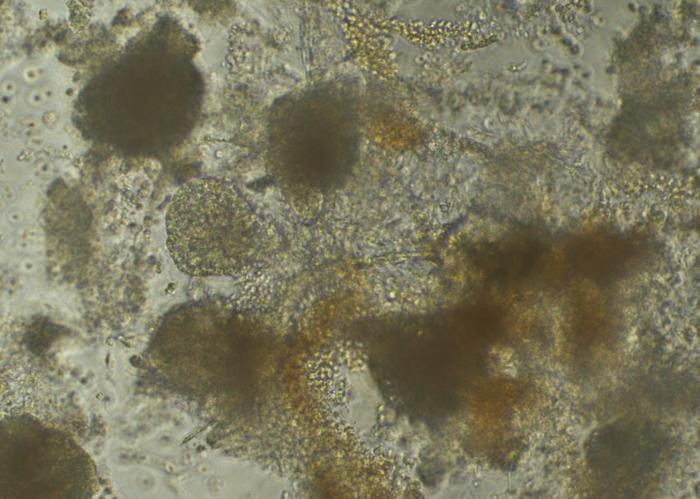Studies of the interaction between human genetics and biology on a wide scale have been made possible by a potent new stem cell technology.
 Analyzing samples such as heart cells from hundreds of donors (pictured) has the potential to reveal new insights into disease. Image Credit: Trevor Atkeson and Madhavi Pandya, Garvan Institute
Analyzing samples such as heart cells from hundreds of donors (pictured) has the potential to reveal new insights into disease. Image Credit: Trevor Atkeson and Madhavi Pandya, Garvan Institute
Using a technique developed by the Garvan Institute of Medical Research, stem cell samples from hundreds of people can be studied on the same culture dish, which has the potential to revolutionize the study of complex human features and personalized medicine.
In the body, stem cells can differentiate into various cell types, enabling researchers to investigate disorders and test drugs on human cells. However, since these studies need samples from hundreds or even thousands of donors, the cost and time involved are significant obstacles.
The ‘village in a dish’ technique developed by the Garvan team, which allows studies to be up to 100 times more productive, can speed up this research by cultivating and examining stem cells from a large number of donors at once in the same culture dish.
Our village model provides a powerful way to understand how genetic differences between people influence health and disease. Even though we share the majority of our DNA, variations in our genes lead to unique traits and responses. The village system captures this diversity at a large scale, revealing how genetic differences between people affect the complex mechanisms underlying biology and disease.”
Joseph Powell, Professor and Director, Cellular Science at the Garvan Institute of Medical Research
Prior population genomics research evaluated gene expression using a method termed bulk RNA sequencing, which essentially averages the variable expression of several cell types into a single metric.
This hides any distinctions between certain cells or cell types and might give a skewed or incomplete picture of how genes are expressed in the sample, which could end up in findings that are incorrect or misleading.
The ‘village’ strategy, which involves cultivating stem cells from a variety of donors in a single dish and analyzing them using a process known as single-cell sequencing, was created by the researchers to get around these difficulties.
Their findings demonstrate that the strategy preserves the distinctive characteristics of each culture. This gives researchers an effective way to scale studies to the enormous sample sizes needed to accurately represent the population.
A Powerful Setting for the Study of Human Biology
The village-in-a-dish technique offers extensive research on inaccessible human organ systems. It is no longer necessary to get living tissue samples from organ donors to create organ-specific cells, and the restrictions associated with just researching a small number of people’s cells are also removed.
By creating heart cells from thousands of people, for instance, it could be feasible to learn more about cardiac diseases than would be possible with direct tissue collection.
Powell added, “Medical research often relies on animal models, which are not perfect physiological proxies for humans. Induced pluripotent stem cells, which can be generated from a patient blood sample, provide the complete DNA profile of the patient and then can be differentiated into almost any cell type in the human body. From a basic science perspective, the stem-cell-based system is a powerful means to gain insights into the relationship between human genetics and biology that can't be achieved with animal models.”
From Culture Dish to the Clinic
This technology will allow for rapid clinical trials to predict how groups of patients will react to drugs, allowing for the development of novel therapies.
The translational potential of this research is particularly compelling. By studying cells from many individuals at once, we can identify genetic factors that influence disease and treatment response at an unprecedented scale.”
Dr. Drew Neavin, Study First Author and Postdoctoral Scientist, Garvan Institute of Medical Research
Dr. Neavin further added, “An example is assessing cardiac toxicity, or Lewy body accumulation in Parkinson’s disease across hundreds of cell lines derived from patients. Rather than reflecting single individuals, such studies would reveal shared and distinct responses among genetic groups. The insights could then inform clinical trials by pre-selecting patient populations likely to benefit. Overall, this approach could transform our ability to translate stem cell science into precision treatments.”
The study was published in Nature Communications.
It is part of a substantial amount of work produced in close collaboration with scientists from the University of Queensland, the University of Melbourne, and the Menzies Institute at the interface between population genomics and stem cell research.
Powell concluded, “We look forward to seeing how our village system is used to gain unprecedented insights into the genetic basis of complex traits and diseases, translating to precise diagnostics, tailored treatments, and better health for all.”
Source:
Journal reference:
Neavin, D. R., et al. (2023). A village in a dish model system for population-scale hiPSC studies. Nature Communications. doi.org/10.1038/s41467-023-38704-1